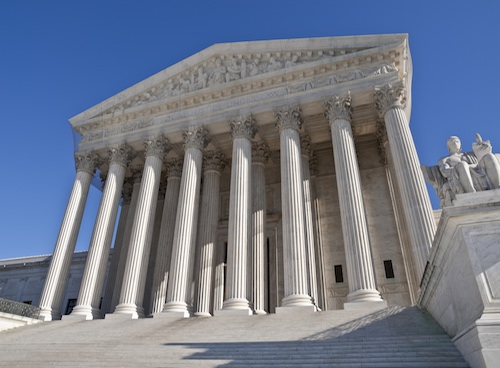Actelion Pharmaceuticals Ltd. v. Mylan Pharmaceuticals Inc. (Fed. Cir. 2023) | McDonnell Boehnen Hulbert & Berghoff LLP
Proper construction of claim limitations reciting the chemical property of pH (which denotes the concentration of hydrogen ions in a solution as an indication of acidity) has arisen several times in district court and Federal Circuit opinions, perhaps the most notable being in Warner-Jenkinson v. Hilton Davis Chemical (1997), which revitalized the doctrine of equivalents. The issue arose recently before the Federal Circuit in Actelion Pharmaceuticals Ltd. v. Mylan Pharmaceuticals Inc., with the Court vacating and remanding the District Court’s claim construction for failure to consider extrinsic evidence. The opinion illustrates the difficulties posed and considerations considered by the Court when addressing claim constriction for terms comprising pH.
The case arose in ANDA litigation related to Actelion’s Flolan® (epoprostenol) product, used for treatment of cardiovascular disease. As described in the opinion, the compound is unstable in water and prepared by Actelion as a freeze-dried or lyophilized power for reconstitution in commercially available IV fluids prior to use (intravenous administration to a patient) without needing refrigeration (sold by Actelion as Veletri®). The patents-in-suit were U.S. Patent Nos. 8,318,802 and 8,598,227, with claim 11 of the ‘802 patent being set forth as representative:
11. A lyophilisate formed from a bulk solution comprising:
(a) epoprostenol or a salt thereof;
(b) arginine;
(c) sodium hydroxide; and
(d) water,
wherein the bulk solution has a pH of 13 or higher, and wherein said lyophilisate is capable of being reconstituted for intravenous administration with an intravenous fluid.
(wherein the italicized limitation was at issue in the case). The opinion also notes that the inventor’s discovery that epoprostenol formulations “in the presence of an alkalinizing agent, and high pH (>11) is very stable compared to Flolan” was unexpected. Litigation ensued when Mylan sent Actelion a Paragraph IV letter under 21 U.S.C. § 355(j)(2)(A)(vii)(IV), with Actelion asserting claims 1, 6, 8, 10, 11, 16, 18, 20, and 22 of the ‘802 patent and claims 1–3, 8, 10, 12, 14, 16, 18–22, and 24–42 of the ‘227 patent under 35 U.S.C. § 271(e)(2).
Both parties argued that the pH limitation should be construed by its ordinary and customary meaning but differed as to what that meaning was. Actelion argued that the term “a pH of 13 or higher” should be construed as giving the acidity value of the solution as an order of magnitude subject to conventional rounding rules, wherein the term would include a pH of 12.5 (which would be rounded up to 13). Mylan, on the other hand, argued that the term cannot properly be construed to include any pH value less than 13 and if interpreted as a range must be between pH 12.995 and 13.004 based on the concept of significant figures (or digits) in view of the logarithmic nature of pH values. Both parties asserted chemical textbooks to support their claim construction arguments.
The District Court declined the parties’ invitations to consider the proffered textbook definitions as extrinsic evidence and construed the limitation according to Actelion’s plain meaning definition based solely on the intrinsic evidence. According to the District Court, the plain meaning of a numerical value included two significant figures and thus “a pH of 13” would ordinarily encompass values from 12.5 to 13.4. Neither the specification nor the prosecution history contained any disclosure that would implicate any “increased degree of precision” according to the District Court. The parties stipulated infringement in favor of Actelion, the District Court entered judgment, and this appeal followed.
The Federal Circuit vacated the judgment and remanded to the District Court for further claim construction in light of extrinsic evidence, in an opinion by Judge Stoll joined by Judges Reyna and Stark. After reciting the standard of review (de novo for claim construction relying solely on intrinsic evidence, clear error for claim construction relying on extrinsic evidence, and de novo on the “ultimate interpretation of the claim”), the panel turned to the “narrow question” of the proper meaning of “a pH of 13” in the context of the ‘802 and 227 patents. Put simply, the Court found the intrinsic evidence to be “equivocal” and the extrinsic evidence asserted by the parties and not considered by the District Court to be “highly relevant to how a person of ordinary skill would understand the [disputed claim] language.” The opinion then reviewed the conventional sources of claim construction (the “plain and ordinary meaning” of the claim language, the specification and the prosecution history) to explicate their conclusion that the intrinsic evidence was equivocal. Regarding the “plain and ordinary meaning” of the claim language, the panel disagreed with Mylan’s construction involving the range from pH 13 to the upper range of pH 14, stating that such cases are “not of great significance to our analysis here” and “there is no blanket rule that ranges, or specifically open-ended ranges, must foreclose rounding.” The opinion also notes that while the claims lack any conventional “approximation language” such as “about” the panel did not agree with Mylan’s argument that as a consequence the term “a pH of 13” must be construed to mean exactly pH 13. The opinion states that this absence of approximation language is not dispositive and that the Court is not interested in promulgating a “bright line rule” on this question (and the opinion notes the panel finds both parties’ arguments to be “equally plausible”).
Regarding the specification, the panel finds the language therein to be inconsistent. In some sections the pH of the “bulk solution” are described as being “adjusted to about 12.5-13.5, most preferably 13” (and also distinguished pH 12.5 from pH 13 and the range of pH 12.5-13.5 from pH 13) while elsewhere pH 13 is described as “pH 13.0,” which would indicate a more restricted scope for this limitation. Mylan argued (unsuccessfully before the district court as well as the panel) that these disclosures precluded the claim term “pH 13” from encompassing a range and in particular pH 12.5. These arguments, and Actelion’s responses, convinced the panel that “the specification supplies the same clarity as to the desired level of precision as muddied water” and thus could not be relied upon to provide intrinsic evidence of the meaning of pH 13 in the claims. Further, while the significance of the pH term was in the stability of the drug compound epoprostenol in the formulation, the opinion finds no evidence in the specification that stability was tested in the range of pH 12-pH 13 upon which the claim term could be definitively construed.
And regarding the prosecution history, the Court considered several amendments to the claims involving the pH limitation, and statements by the Examiner that evidence regarding formulations at pH 12 did not distinguish over the prior art but those at pH 13 did so (the amendments resulting in the claim language in the granted patents were included in the Reasons for Allowance).
Under these circumstances the panel decided that:
We find that this case is one where the proper claim construction cannot be reached without the aid of extrinsic evidence, and that the district court should have considered, at minimum, the textbook excerpts offered and addressed by the parties.
This decision was supported by Supreme Court precedent (Teva Pharms. USA, Inc. v. Sandoz, Inc., 574 U.S. 318, 331 (2015), and Federal Circuit case law (Pickholtz v. Rainbow Techs., Inc., 284 F.3d 1365, 1372–73 (Fed. Cir. 2002)) cited in the opinion.
Accordingly, the panel decided to vacate and remand, because:
It is not for this court to make those findings [regarding extrinsic evidence] in the first instance. We decline to decide, for example, how many significant figures “a pH of 13” has or what it would mean for a number—either for a pH value or for the concentration of hydrogen ions—to have zero significant figures. Instead, we leave those and other relevant factual questions that might arise based on the extrinsic evidence, including the three textbooks, for the district court to address in the first instance.
Actelion Pharmaceuticals Ltd. v. Mylan Pharmaceuticals Inc. (Fed. Cir. 2023)
Panel: Circuit Judges Reyna, Stoll, and Stark
Opinion by Circuit Judge Stoll
[View source.]






